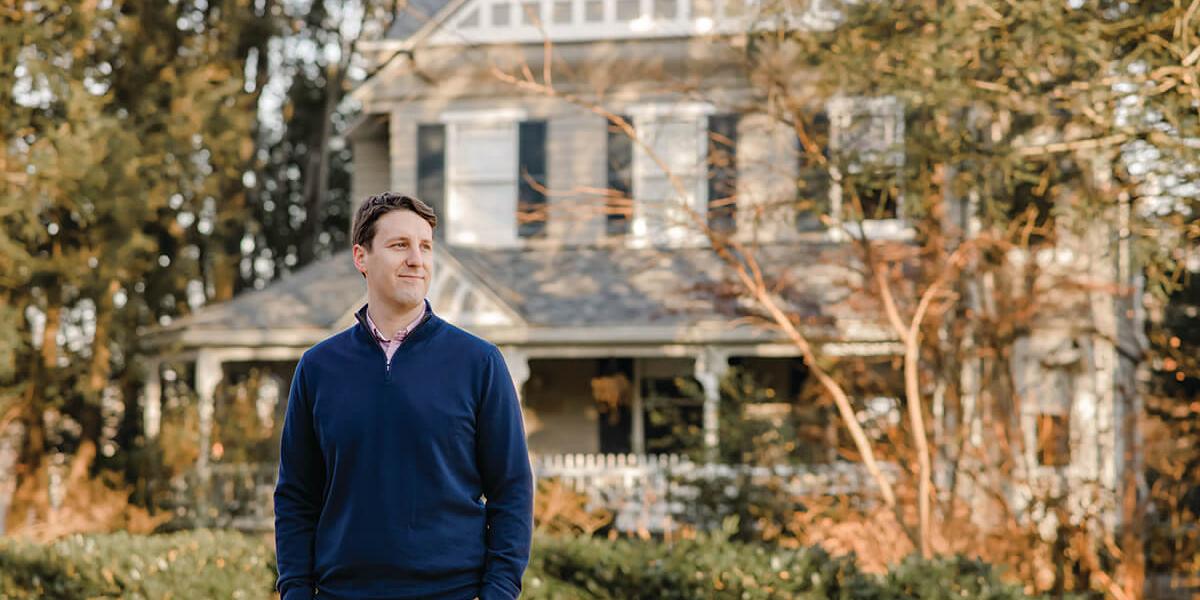Home & Living
This Popular Instagram Account Tells the Stoop Stories of the City
Jason Freeman's @historichomesofbaltimore offers much more than just pretty pictures.
Jason Freeman is like an avid birder—but instead of feathered friends, it’s historic homes he’s observing, and his equipment of choice isn’t binoculars but the camera of his trusty iPhone.
Freeman, the founder, researcher, and often the main photographer of the @historichomesofbaltimore Instagram account, has slowly built his audience from a handful of local friends and family to over 18,000 followers that come from such far-flung places as Georgia, Missouri, California, and Louisiana. They scroll a few times a week as Freeman posts homes he encounters on his daily walks and runs around Baltimore—historic photos of residences, places for sale, favorite spots in the city, and “historic hidden gem neighborhoods.”
Despite his love for Charm City dwellings, Freeman didn’t grow up here, nor does he have a background in architecture. Instead, the 31-year-old upstate New Yorker and data analyst for Catholic Relief Services moved to Baltimore five years ago and relocated around the city—Mt. Vernon, Federal Hill, and Roland Park—as his family grew. He was charmed by what he saw. “My phone has always had lots of photos of random homes that I’ve taken while I was walking or running,” he says. But it was strictly a hobby at first, and the photos just sat on his phone.
The Instagram account was born the same month as his son, in June 2019. Freeman and his wife had just moved into an apartment near the Roland Water Tower in Roland Park, and he found himself spending hours strolling his newborn son through the streets, as a bleary-eyed parent desperate for baby slumber often does. Every block was better than the one before, with home after home resplendent with architectural details and frozen in time from their dates of construction. “I just started wondering about the history—when they were built and who lives there,” says Freeman.
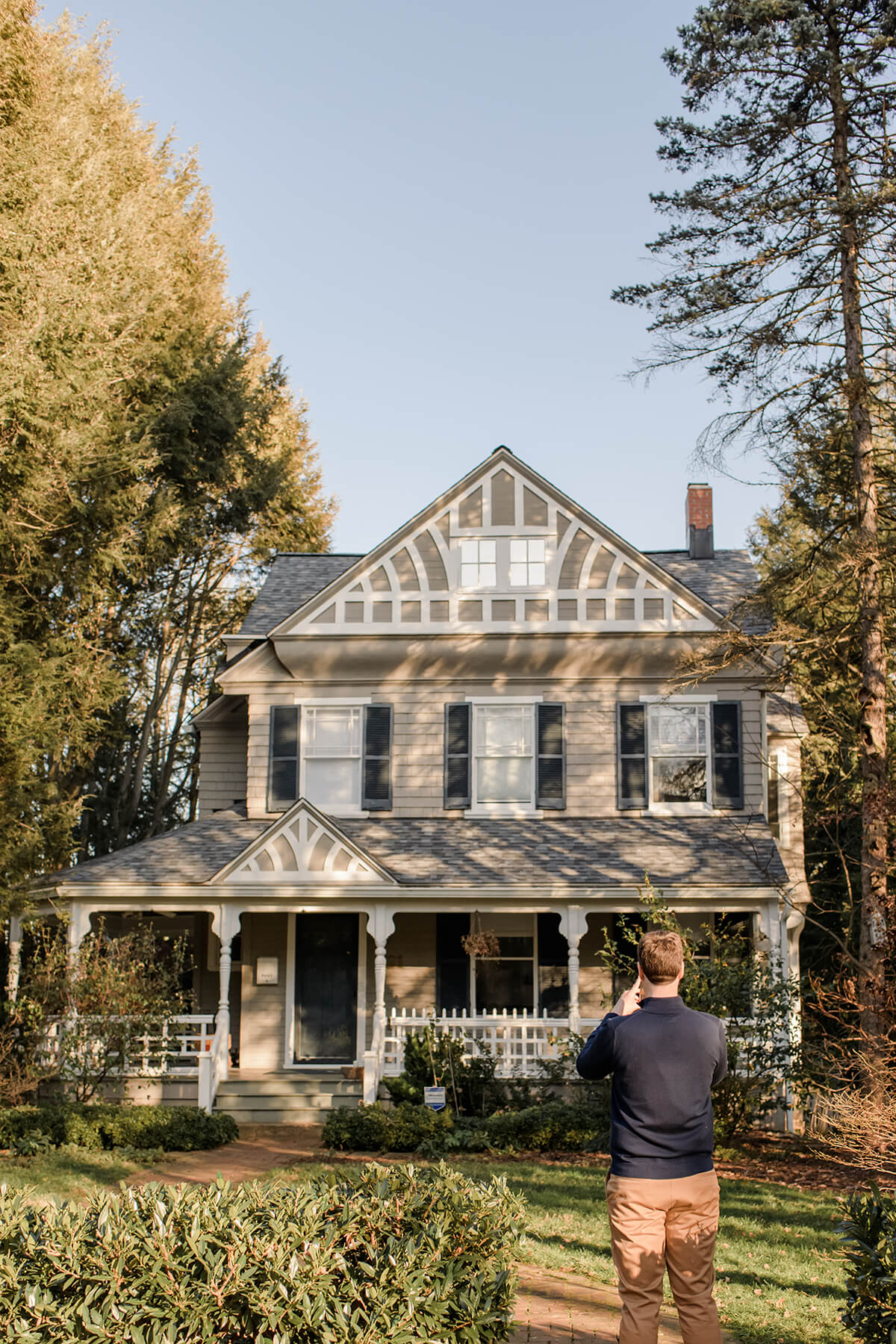
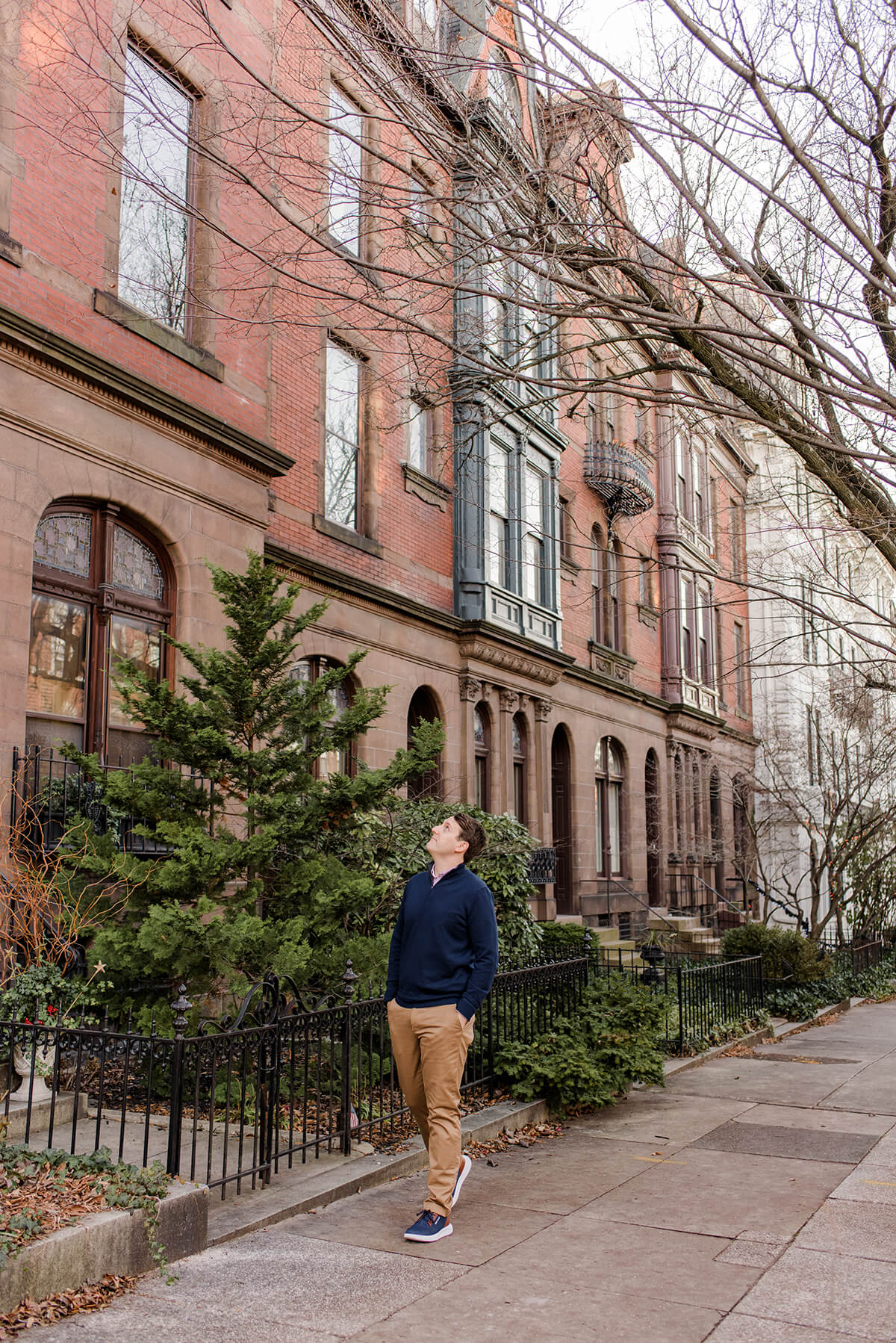
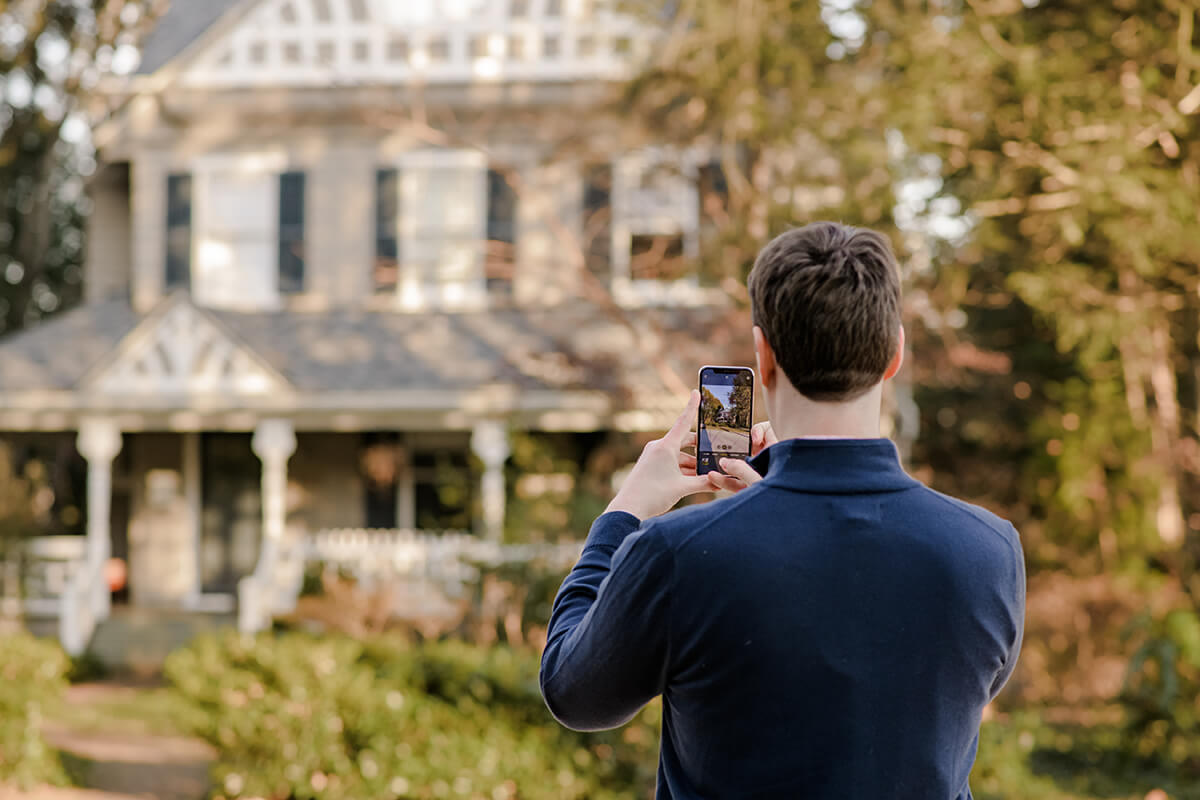
Three years and 600 posts later, Freeman is consciously curating his account, weighing the exquisite beauty of a home with the history of how it came to be. “I try to balance beautiful homes with sharing the history surrounding them,” he says.
Along with taking photos, he started digging deeper into the homes’ past and sharing what he gathered. Sometimes what he uncovers isn’t so sunny.
One example, when the Roland Park Company was developing Plat 2 in the late 1890s—Roland Park is divided into six plats—they discovered they didn’t own a half-acre plot of land they needed to build on. It turns out it was owned by Solomon Moonier, a Black man who bought the land in 1802 and built a home and family burial ground. By the time Roland Park was being developed, Moonier had died and 12 of his heirs were identified. The company “worked within a legal system that discounted Blacks’ claims to property and negotiated in bad faith,” ultimately paying only $800 to be split between his descendants, according to How the Suburbs Were Segregated by Paige Glotzer.
As part of the purchase, the Roland Park Company gave the family six months to remove the bodies in the family graveyard, or the company would do it itself. The historic photograph Freeman posted on July 1, 2021, shows houses located around the corner from what was the Moonier property—now Oakdale Road. Without the accompanying text it’s just a pretty picture—with it, it’s history.
His IG Stories include other book recommendations that also delve into the sticky history of the city. “When I first started, I didn’t fully understand how intertwined Baltimore’s history with race, segregation, and racism was tied to the homes I was looking at,” says Freeman.
That learning curve also meant extending the areas he was exploring. Instead of just sticking with the zip codes he lived in, worked near, or visited to see friends, he started seeking out new communities.
“I try to be more intentional about featuring a mix of neighborhoods,” says Freeman. “I’m going out of my way to go to areas that I might not otherwise go to or where I don’t necessarily know people that live there to try and share stories from all over the city.”
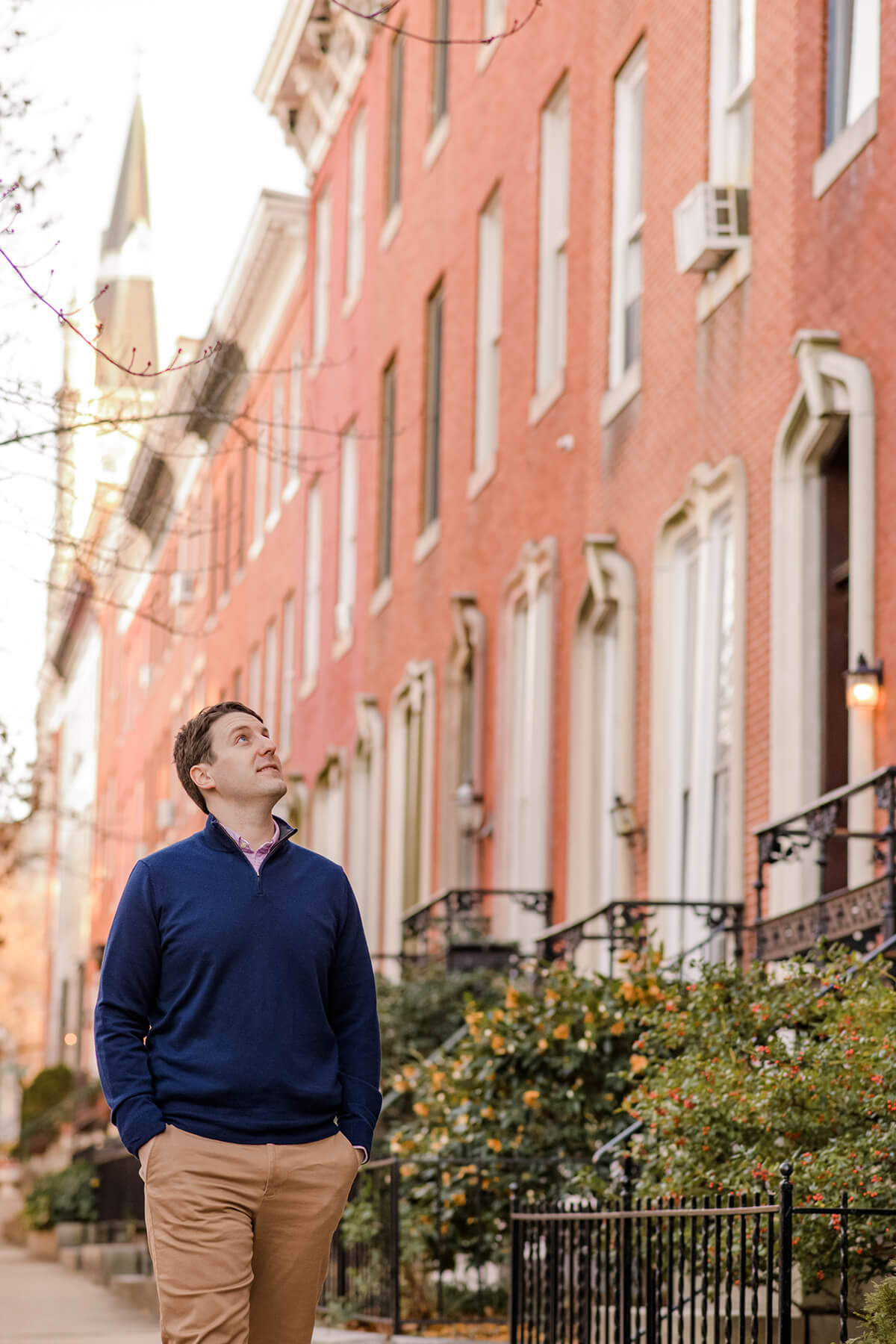
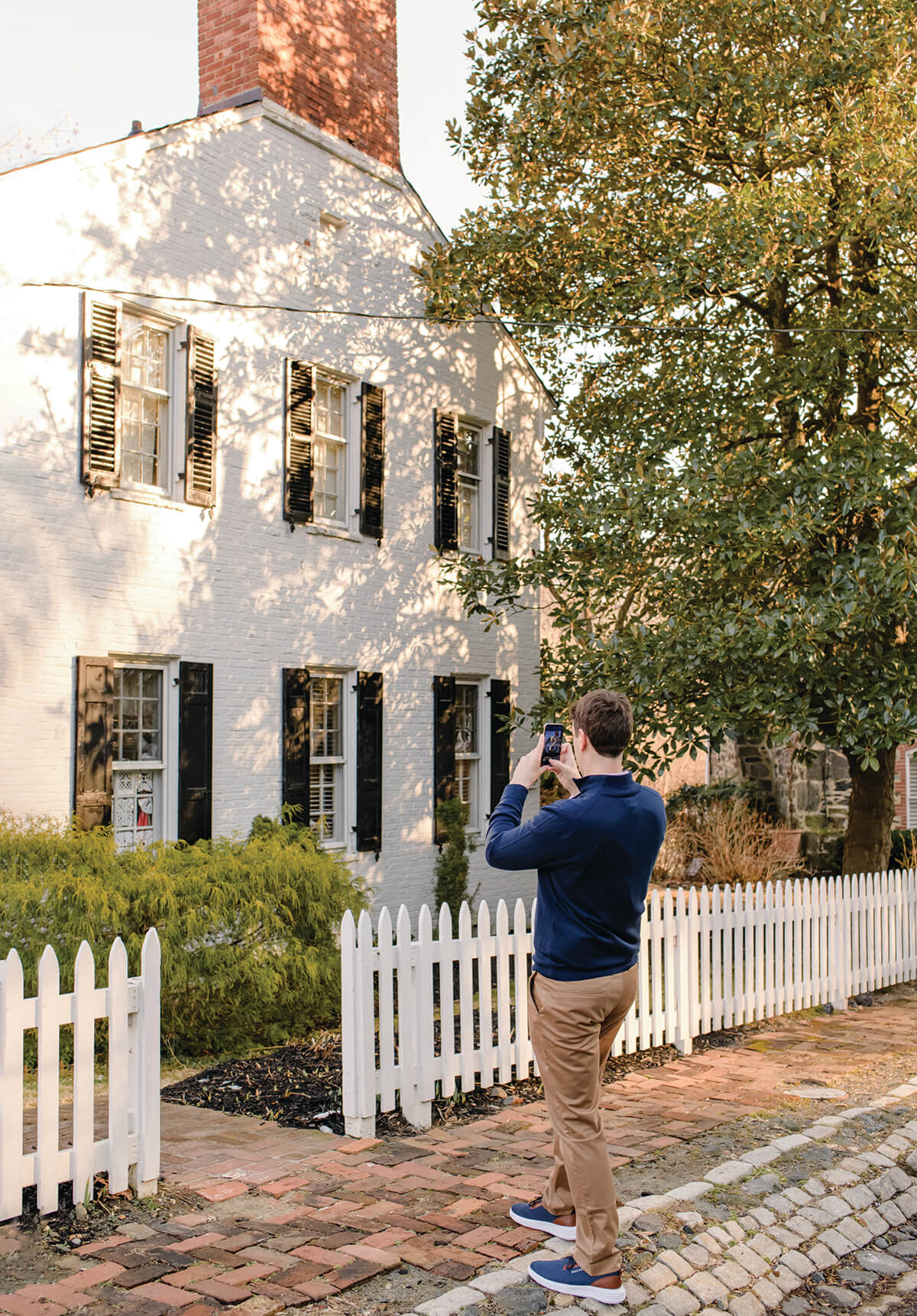
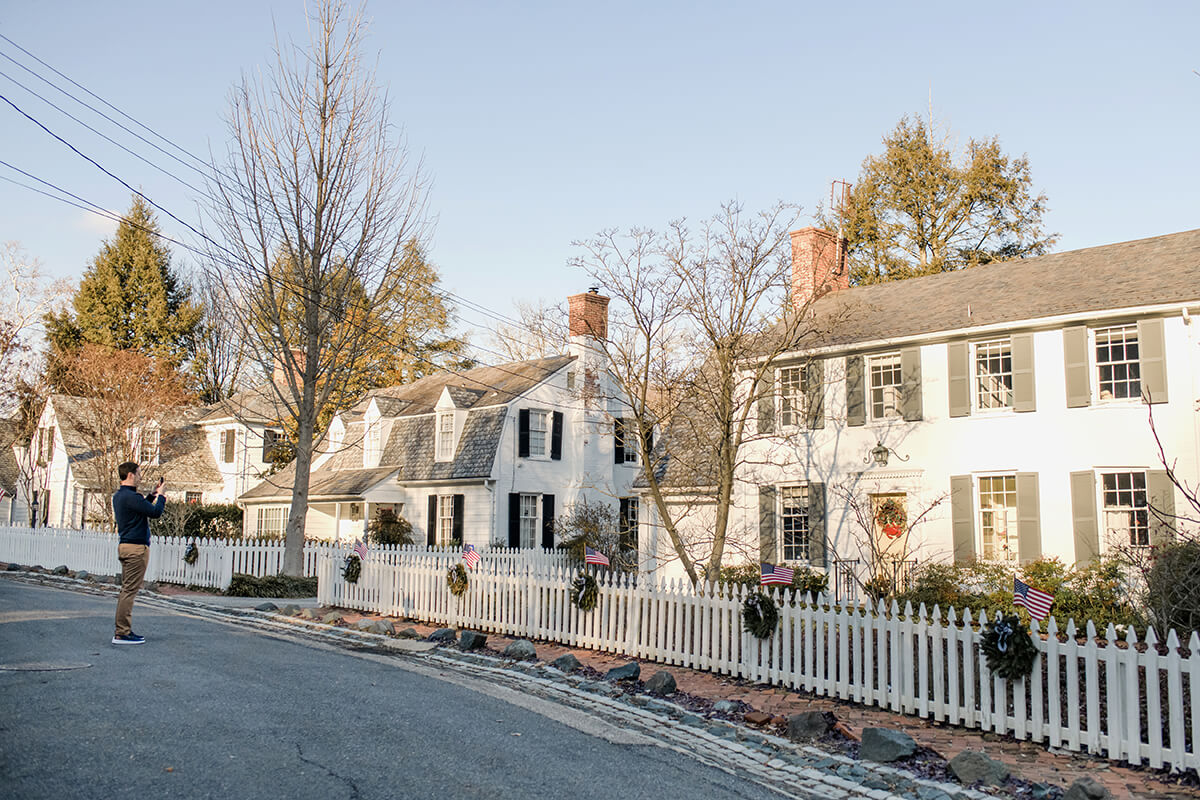
That meant checking out Tuscany-Canterbury, Arcadia-Beverly Hills, Dickeyville, Windsor Hills, Original Northwood, Ednor Gardens, and Union Square. “I probably wouldn’t have learned about some of these neighborhoods if I wasn’t doing this page,” he admits. Sometimes Freeman just snaps a picture and posts it because it’s attractive—great door color, curb appeal, or unique characteristics. Other times, he’ll make a note of the address and delve into the genealogy of the house or its inhabitants, from AIDS activist John Stuban’s tiny rowhouse in Mt. Vernon to a stunning mansion on what is now Loyola’s campus, initially built by an heir to the B&O Railroad fortune as a wedding gift to her son and his new bride.
His followers eat up these stories. Some are people who grew up in Baltimore or went to school here, and while they’re no longer residents, are nostalgic for the city’s unique rowhomes, Victorians, and cottages. “I get messages about how nice it is to see some of the streets that they remember growing up on,” he says. However, a big chunk of Freeman’s followers are current dwellers. “Every so often I’ll get a message like, ‘Yay, you finally shared my house.’”
He has become part cheerleader for the city and part detective, often spending time on the Johns Hopkins Flickr account or digging through neighborhood archives. Sometimes, Freeman will just seek out things that he’s always wondered about—like the Telescope House in Original Northwood. The Tudor Revival home was built in 1931 with the copper rooftop observatory added in 1937, both designed by John Ahlers.
“The observatory was built for Joseph L. Woods, a toy manufacturer and amateur astronomer. He was particularly interested in photometry and variable stars and had ties to Harvard University and the University of Pennsylvania,” Freeman says. Luckily, when it was built, the surrounding area provided enough darkness for good nighttime views.
Freeman is also the first to admit he doesn’t know everything. “Some of the fun of the page is I’m learning from other people,” he says. If he doesn’t know something (say the style of a particular house), he’ll throw it to his followers. They almost always know. “Often they do have a background in architecture,” he admits. “I always feel like I’m learning a lot from other people. And I try and approach the page like that too.”
Lately, Freeman has been leaning into IG reels, with music and text accompanying some of his posts. He’s still doing “for sale Friday,” one of the few days people get to see the actual inside of the homes on his account. Part of it is his own curiosity—he and his wife are house-hunting—and part of it is just scratching that insatiable itch of knowing what’s behind the front door.
And the best thing about Baltimore? There will always be more houses to cover, providing Freeman has the time and interest. There’s so much history here, he says—each historic neighborhood like an archaeologist’s dream—something that doesn’t exist anymore with McMansions and cookie-cutter developments. That’s even more reason why historic home preservation—and an Instagram account dedicated to their survival—is so important.
“A lot of people love old houses, but I think sharing it to a wider audience is always fun,” says Freeman. “These homes have a lot of great stories; they are beautiful, but they’re pretty rare. So that’s kind of special.”
